Best alpine plants: 16 types for borders, pots and rockeries
Discover the best alpine plants and introduce dynamic foliage, pretty flowers and stunning ground cover to your garden
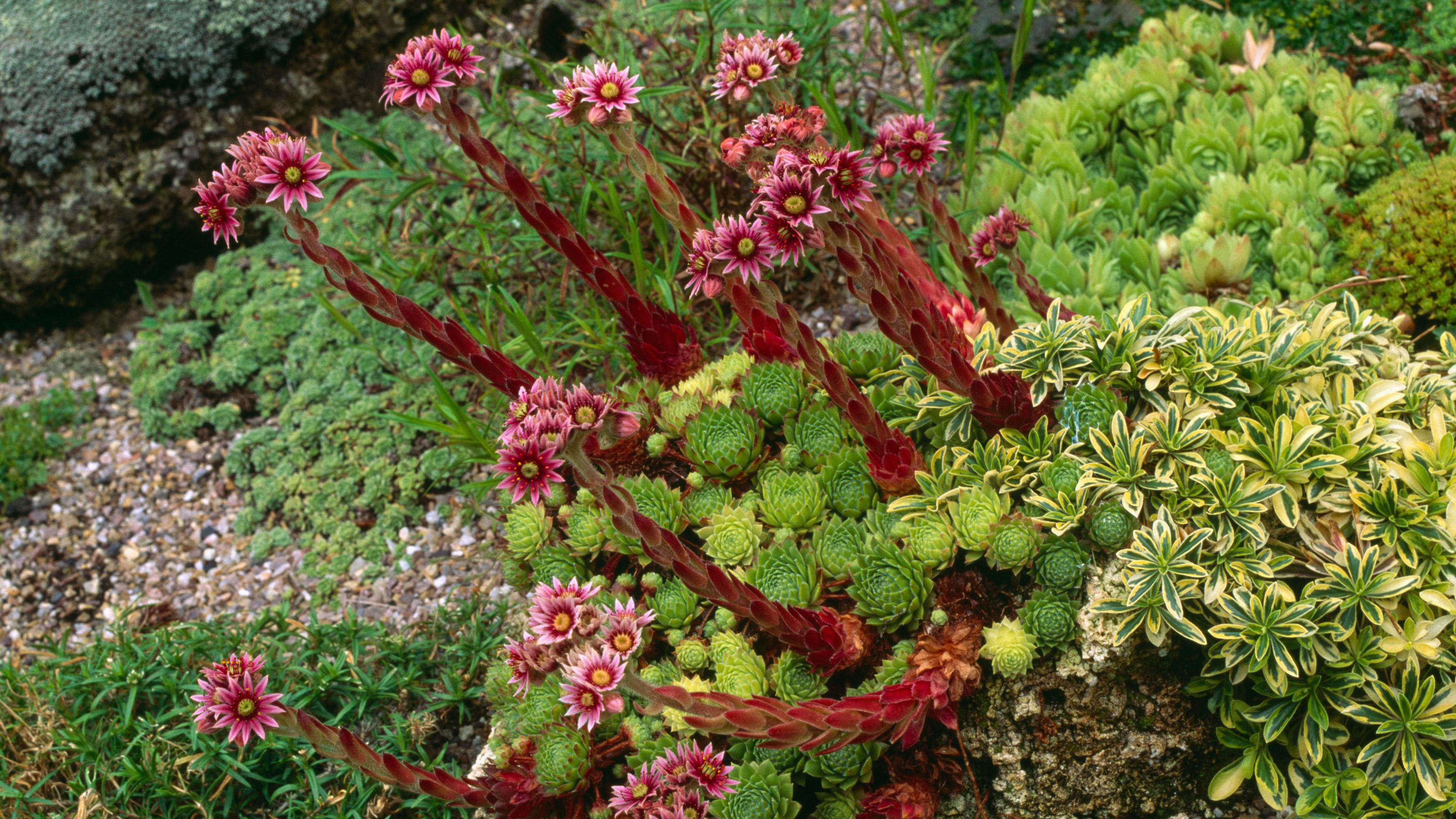

When you think of alpine plants, it might seem like a niche horticultural club, requiring lots of expertise and specialist composts. Certainly, you’ll find a few specimens at botanical gardens, displayed as scaled-down versions of alpine landscapes in dedicated glasshouses.
But this doesn’t mean you can’t enjoy alpine plants in your garden. These petite beauties frequently offer tiny jewel-like flowers and shiny, sometimes succulent foliage. But don’t go thinking they are fragile – many are tough and hardy, originating in rocky and mountainous conditions, often at high altitudes and exposed sites with extreme temperatures and little water.
It’s these challenging growing conditions that make alpine plants a great choice for the garden. Whether you are looking for unusual container displays, something to fill a gap at the front of a border or soften the edges of a path or raised bed, or perhaps you want to try a drought tolerant scheme, or a green roof, there are alpines to suit.
Not only are alpines considered to be some of the best plants for rockeries, many of them are also particularly good at growing in cracks in walls and paving and might even appear uninvited, if you’re lucky. They are also great for pollinators too, so be sure to add them to your wildlife corner.
Once they are established, these small and sturdy stunners need little work to maintain – and will reward you with years of uplifting flowers and foliage.
Try these 16 alpine plants for flowers, foliage and ground cover
Typical alpine plants can range all the way from bulbs such as Iris reticulata through to colourful creeping perennials such as aubretias and campanulas as well as succulent sedums and sempervivums.
The low spreading habit of many alpines makes them some of the best ground cover plants and they are often easy to propagate by division. You can repot baby rosettes of sempervivums or divide sprawling clumps and mats of plants like Veronica prostrata and erigeron in spring.
1. Armeria maritima 'Splendens'
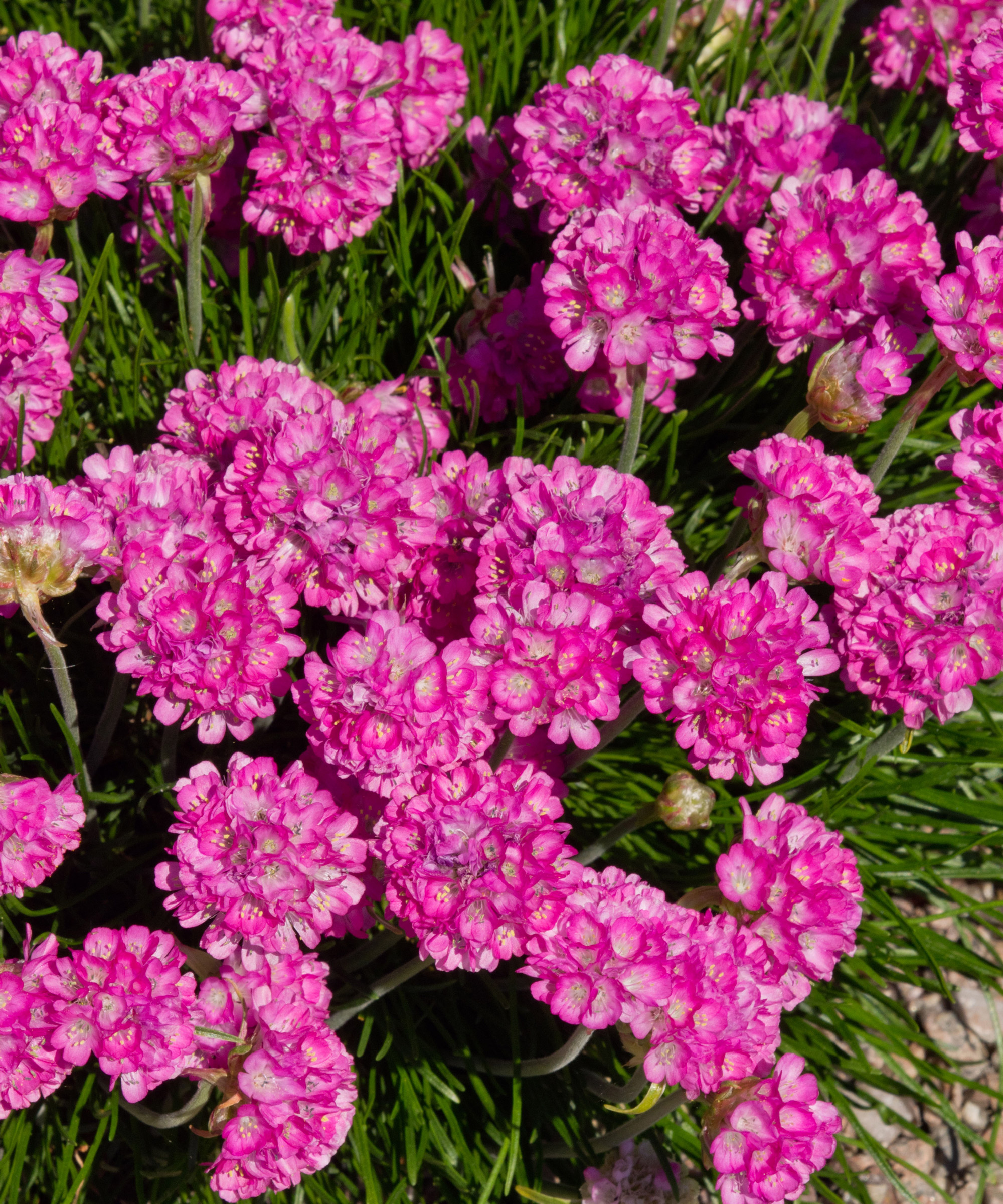
Armeria maritima 'Splendens'
- Hardiness: USDA 4-8
- Height/spread: 20in (50cm)
- Best for: Coastal gardening
The name gives away the natural habitat of these alpine plants. Armeria maritima ‘Splendens’ thrives in the maritime landscape of rocky cliff faces, where the parent plant grows wild. With such lineage, this cultivar is a tough cookie, able to withstand strong winds and sea air.
So if you’re looking for the best coastal plants for a seaside garden, or something pretty and pink for drought-tolerant planting schemes, try this alpine. The mounds of evergreen grassy leaves are decorated with pom-pom blooms like small allium globes in late spring and summer.
2. Aster alpinus ‘Pinkie’
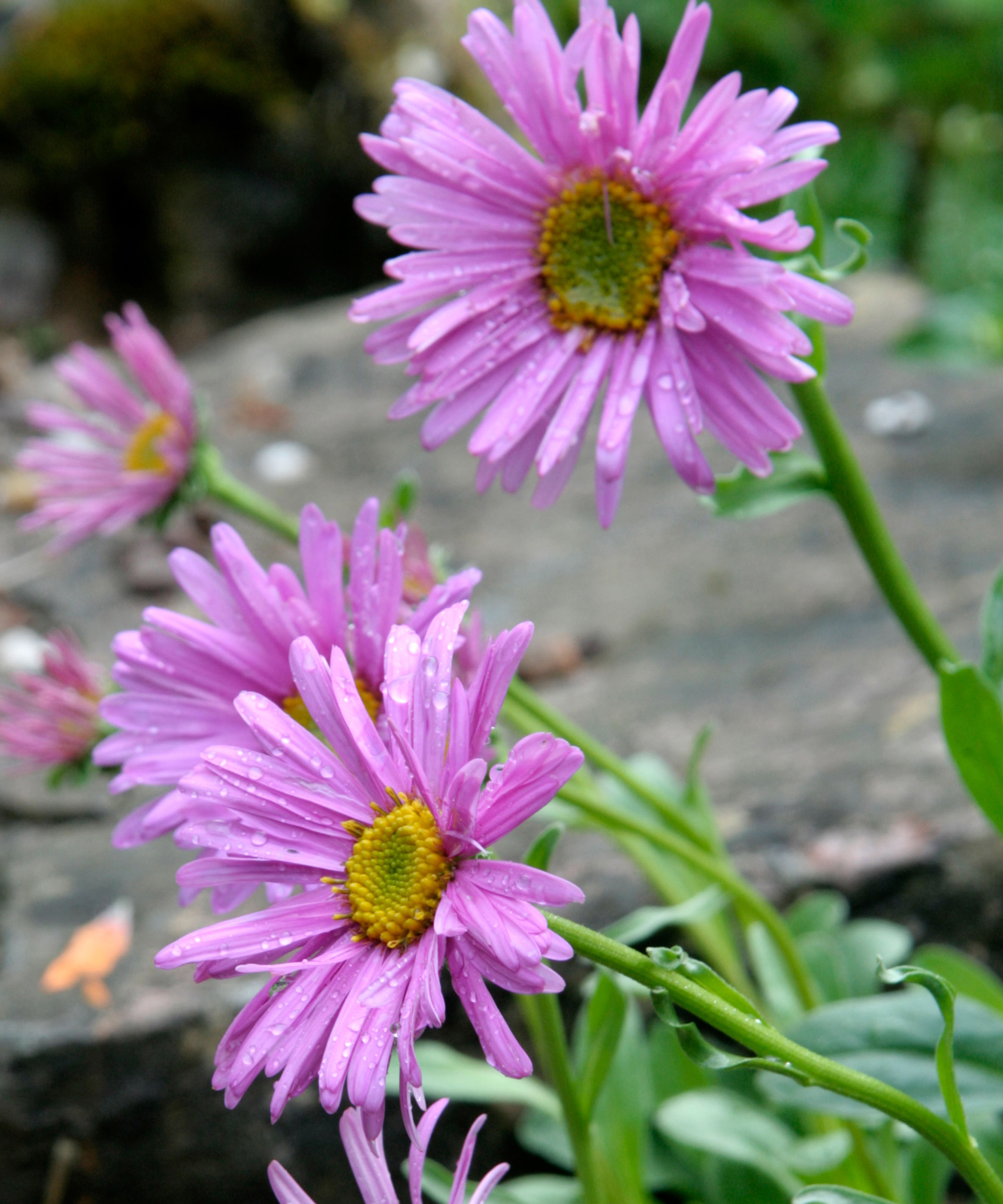
Aster alpinus ‘Pinkie’
- Hardiness: USDA 4-8
- Height/spread: 6in (15cm)
- Best for: Summer borders
Some alpine plants look like daisies and if that’s your fancy then this certainly fits the bill. For anyone in search of the more compact types of asters, Aster alpinus ‘Pinkie’ has daisy-type flowers appearing in quantity over low-growing clumps of foliage.
Thanks to its long flowering season, this alpine variety is a great choice for adding color at ground cover level from mid summer through to mid fall. The dainty pink flowers make a pretty contrast at the front of a late summer border of particularly hot colors.
3. Dianthus alpinus AGM

Dianthus alpinus
- Hardiness: USDA 4-9
- Height/spread: 4in x 2in (10cm x 5cm)
- Best for: Rocky settings
Originating from the mountains of Austria, Dianthus alpinus is one of those alpine plants that works well growing in rocky, alkaline settings in full sun – basically, environments that mimic its native home. And if you’re looking for unusual varieties of garden pinks for your small rock garden ideas, look no further.
This dianthus variety forms small mounds of dark green foliage, with the pink dianthus flowers appearing in high summer. While it is great for adding a pop of summer color, this AGM winner is not a very long-lived perennial, so take cuttings to propagate it and keep it in your garden.
4. Gypsophila repens 'Alba'
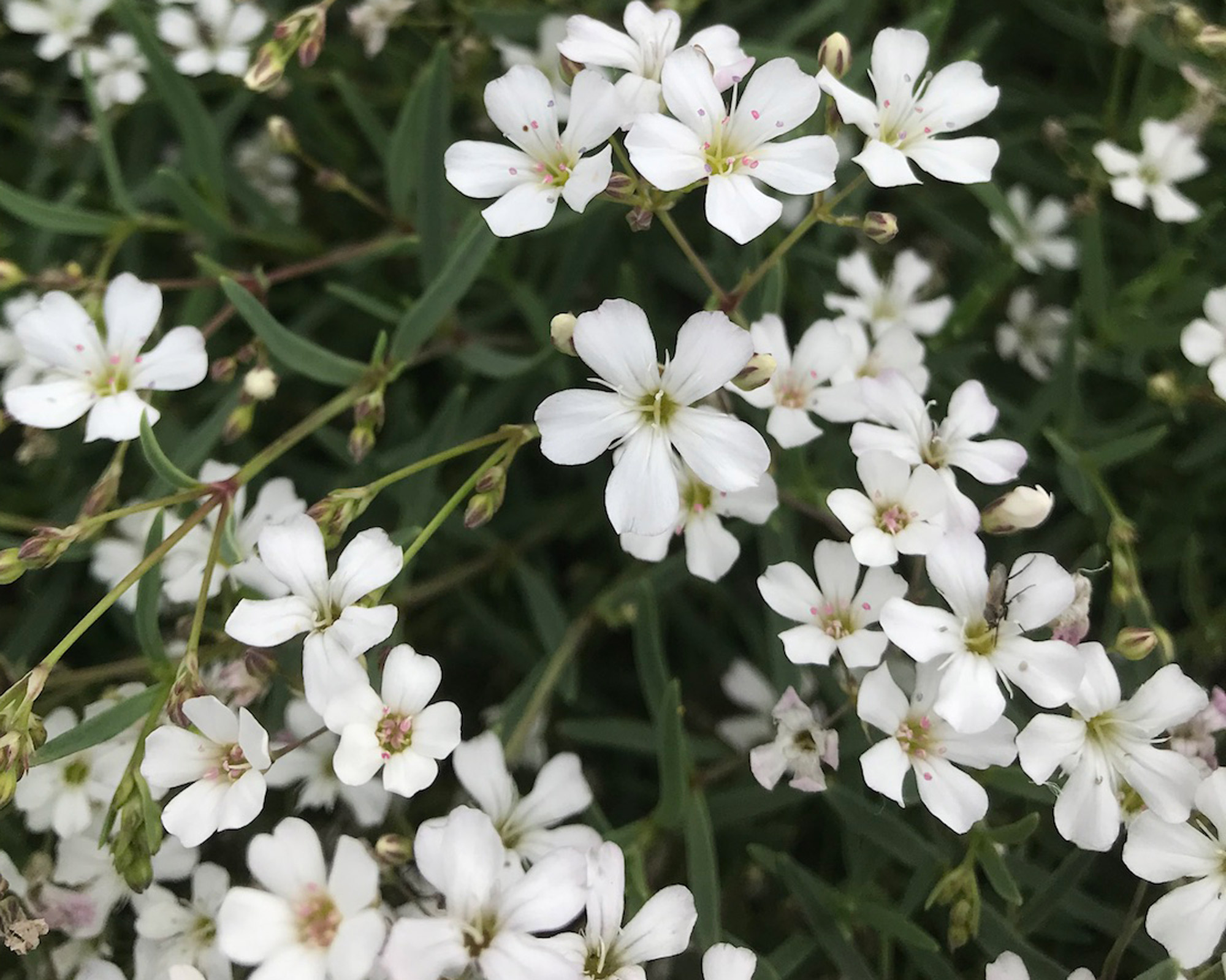
Gypsophila repens 'Alba'
- Hardiness: USDA 3-8
- Height/spread: 4in x 18in (10cm x 45cm)
- Best for: Dry soils
Gypsophila repens 'Alba' is a low-growing, spreading variety of baby’s breath. Lovers of white flowers are sure to appreciate the shimmering pinky white flowers of these plants. They bloom through summer, appearing in a cloud over an attractive mound of silver-green foliage.
This alpine variety will sprawl happily in dry, rocky soils and will tolerate partial shade. However, it’s important to pick the right spot when you are planting out, as gypsophila doesn’t like being moved once in the ground.
5. Linaria alpina
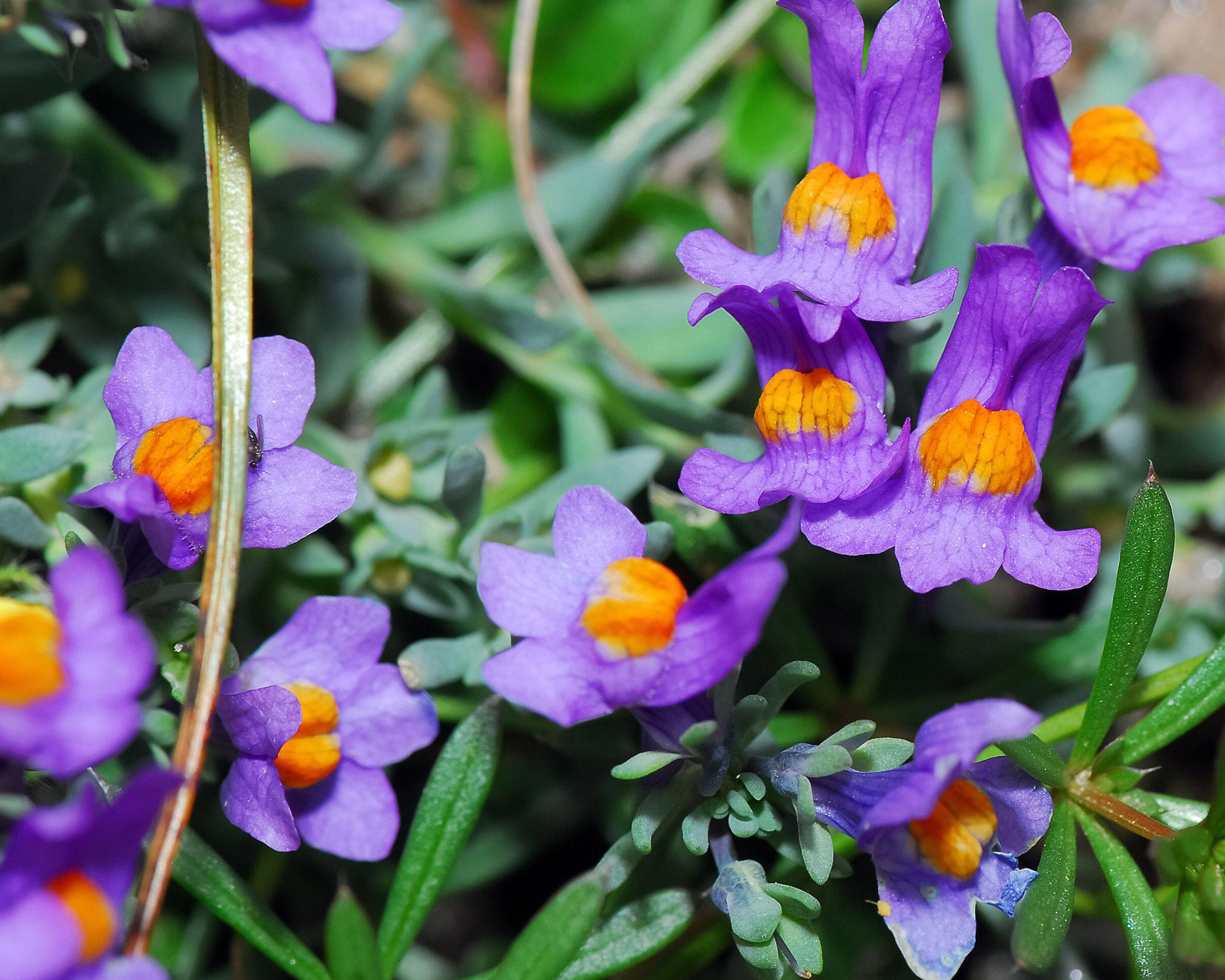
Linaria alpina
- Hardiness: USDA 4-9
- Height/spread: 4in x 8in (10cm x 20cm)
- Best for: Gravel gardens
The alpine toadflax (otherwise known as Linaria alpina) is a hardy but short-lived perennial. With its attractive blue-green leaves and two-tone blooms in violet and orange, it’s a great plant for summer color, although it will die back over winter.
If you are looking for inspirational garden gravel ideas and stone-based landscaping plants, this is a charming alpine variety to try. Preferring well-drained soils, they will do very well in a compact gravel garden or in a more freeform drought-tolerant planting scheme.
6. Phlox subulata
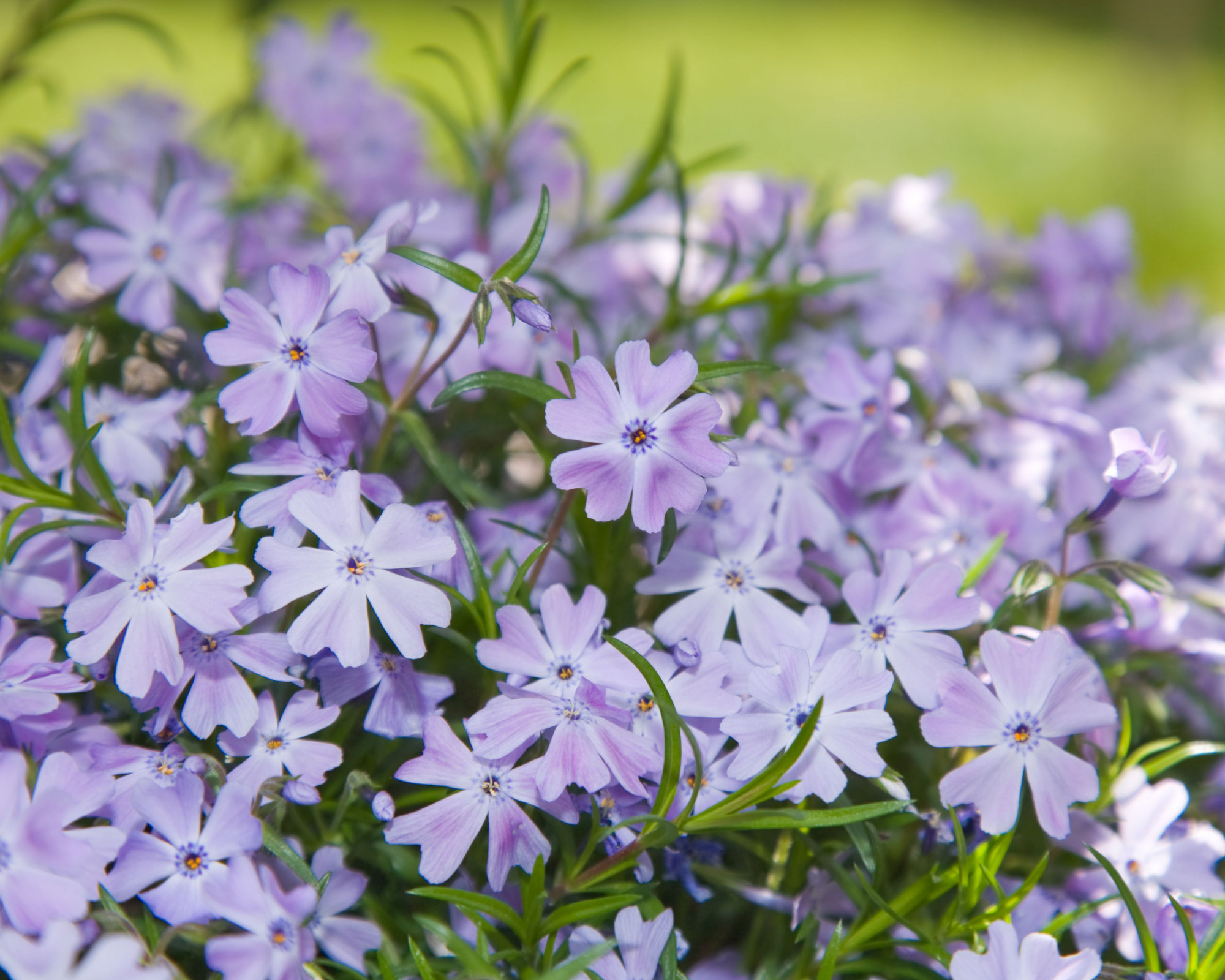
Phlox subulata
- Hardiness: USDA 2-9
- Height/spread: 6in x 20in (15cm x 50cm)
- Best for: Sunny paths and borders
Phlox subulata (aka the creeping alpine phlox) will burst forth with a mass of flowers from spring into early summer, making them perfect for areas where you want easy, colorful ground cover. This spreading perennial is also called moss phlox for its dense, semi-evergreen foliage.
This alpine variety is also ideal for the edges of borders and pathways positioned in full sun. So gardeners after pretty cottage garden path ideas will not be disappointed. The wide range of cultivars includes pure white ‘Snowflake’, ‘Candy Stripes’, ‘Drummond's Pink’ and more.
7. Pulsatilla vulgaris AGM
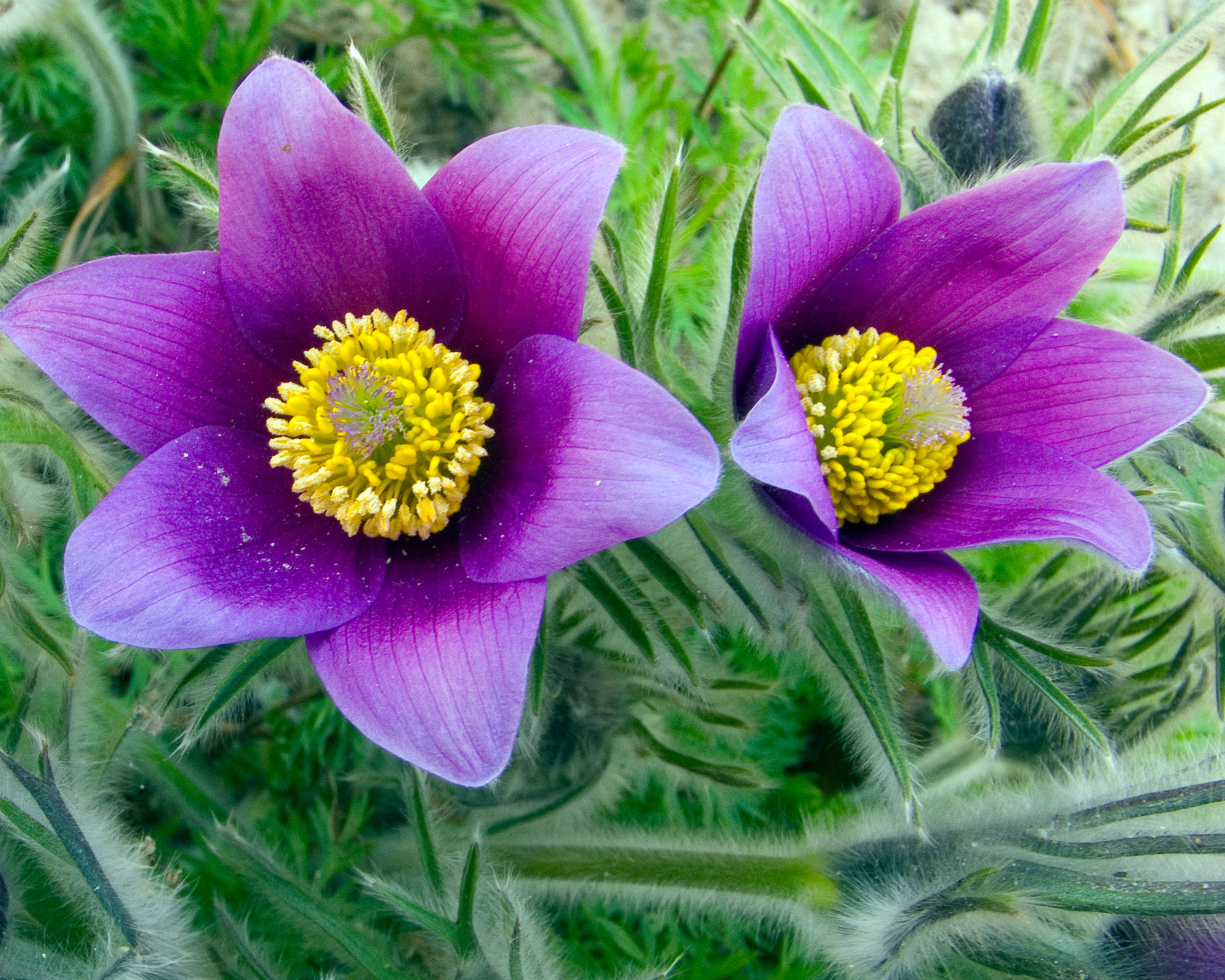
Pulsatilla vulgaris
- Hardiness: USDA 4-8
- Height/spread: 12in (30cm)
- Best for: Deep purple flowers
Also known as the pasque flower, Pulsatilla vulgaris has a habit of blooming at Easter, although this can be as variable as the dates of Easter. Lovers of purple flowers will adore the deep rich intensity of these gorgeous little alpine plants with their attractive two-tone blooms.
While the pretty purple flowers are spent by the end of spring, the distinctive fluffy seed heads and feathery foliage give this AGM winner a longer season of interest, well into summer. In the right well-drained conditions with full sun, the pasque flower will spread happily by seed.
8. Saxifraga alpino ‘Early Lime’
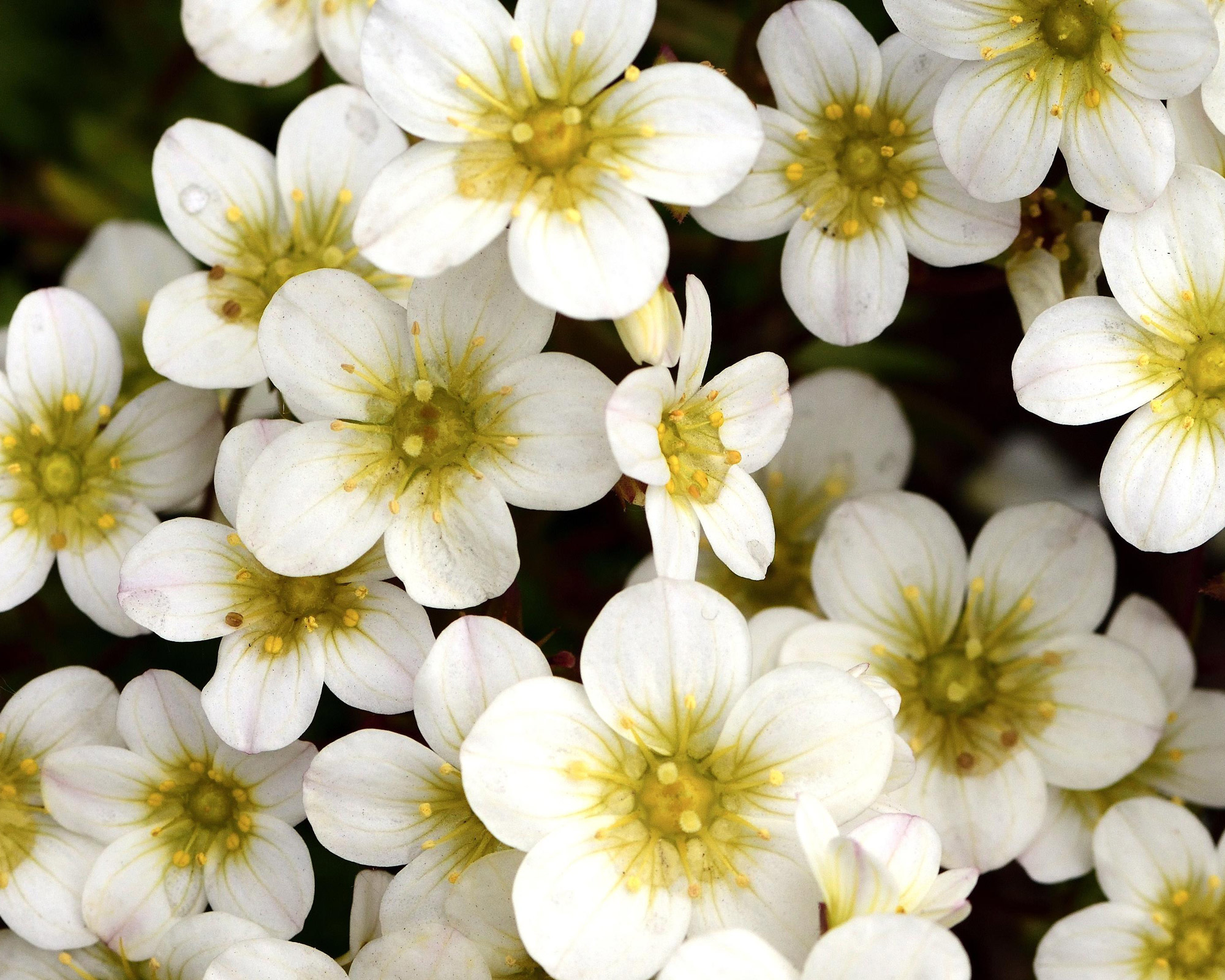
Saxifraga Alpino Early Lime
- Hardiness: USDA 5-8
- Height/spread: 6in x 12in (15cm x 30cm)
- Best for: Drought tolerance
Saxifrages are amongst the best-known alpines. These fast-growing hardy perennials have a long flowering season, and typically form a low creeping carpet of evergreen foliage. And if you have an interest in green flowers, Saxifraga alpino ‘Early Lime’ is quite the looker.
This alpine cultivar produces masses of flowers that are tinged with green from mid spring to early summer. They are some of the best drought tolerant plants you can try, and the blooms also look great spreading over a modern rock garden in full sunshine or partial shade.
9. Veronica prostrata ‘Lilac Time’
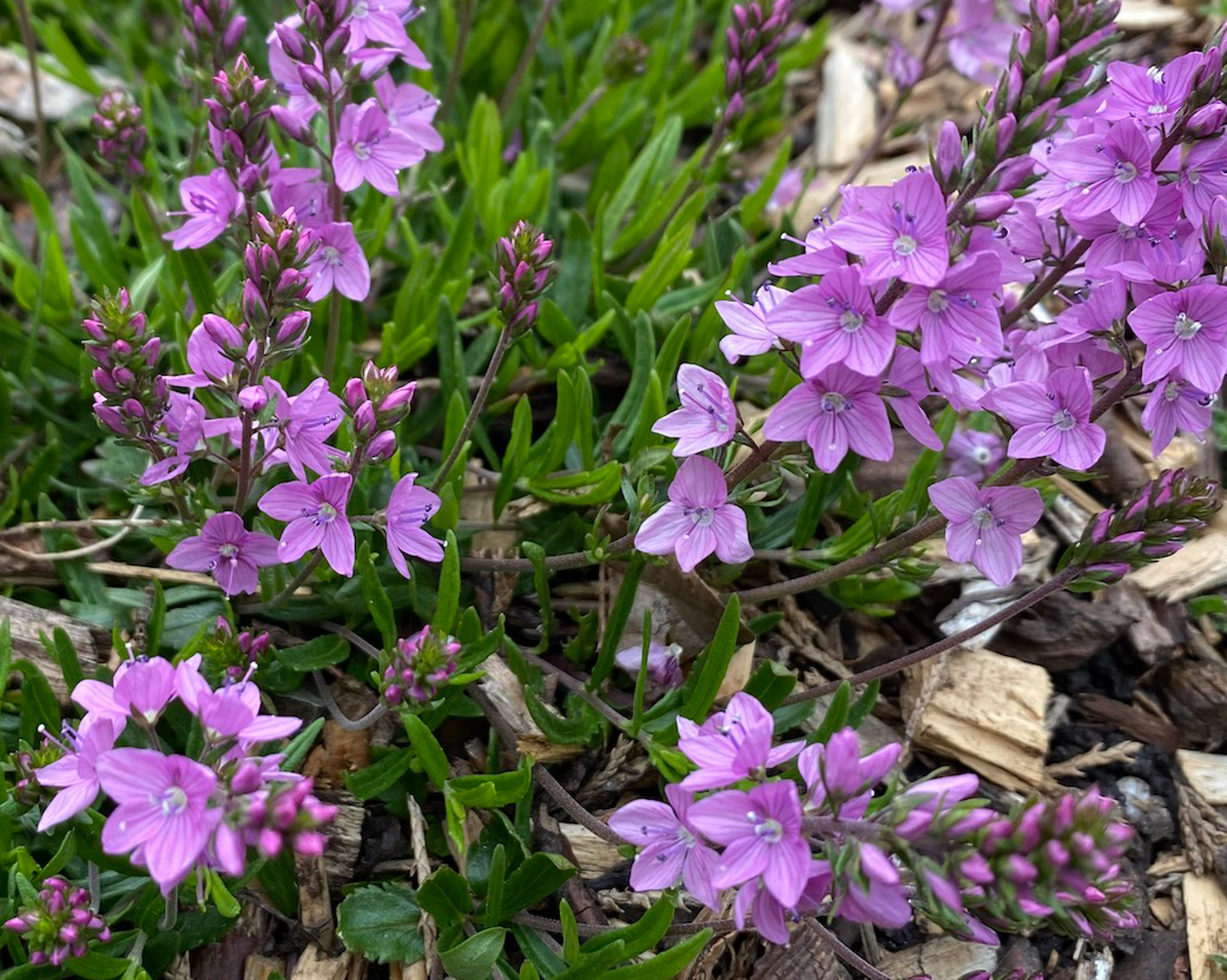
Veronica Prostrata ‘Lilac Time’
- Hardiness: USDA 5-8
- Height/spread: 8in (20cm)
- Best for: Trailing over walls
Another of several stunning purple options, Veronica prostrata ‘Lilac Time’ is an alpine speedwell that forms a dense mat of fresh green foliage in spring. This is followed by small spikes of beautiful pinkish-purple flowers that continue to bloom into midsummer.
These alpines are some of the best plants for covering walls or for trailing over the edges of a container. They will tolerate moist soils as long as it is well drained, and will also be ok in partial shade. This alpine can be divided in spring to make even more of your plantings.
10. Sempervivum ‘Black’
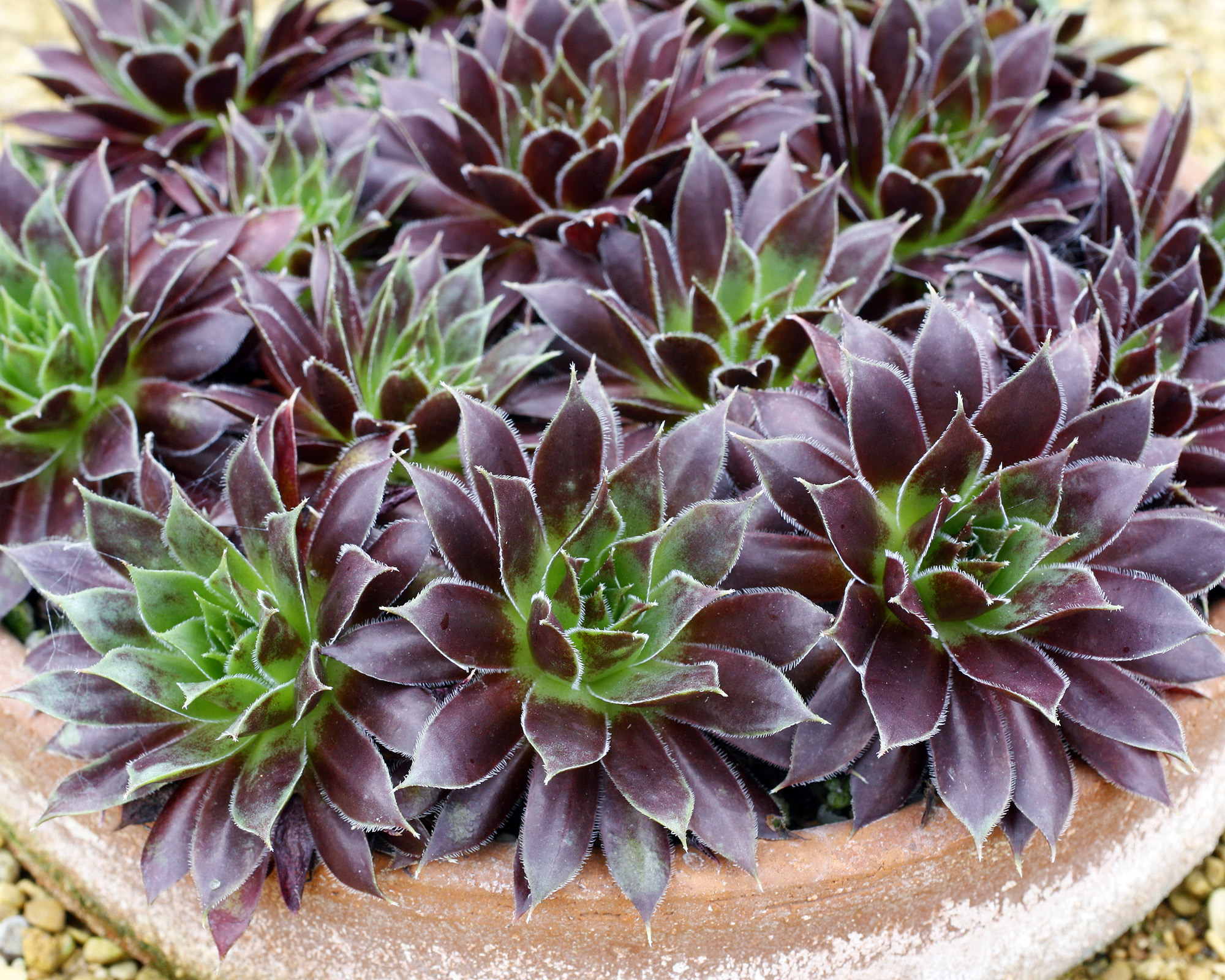
Sempervivum ‘Black’
- Hardiness: USDA 3-8
- Height/spread: 6in x 8in (15cm x 20cm)
- Best for: Dramatic foliage
More commonly known as houseleeks or hen-and-chicks, these are very hardy succulent plants that you might find tucked into mountain rock crevices. The latin name (meaning ‘always alive’) is a nod to the extreme resilience of these alpine plants to temperatures and drought tolerance.
Mixed sempervivums are some of the best plants for garden walls growing vertically in a frame, and also look great in containers. This variety (Sempervivum ‘Black’) has attractive dark maroon-tinged leaves, forming geometric rosettes of evergreen, sometimes patterned foliage.
11. Thymus serpyllum
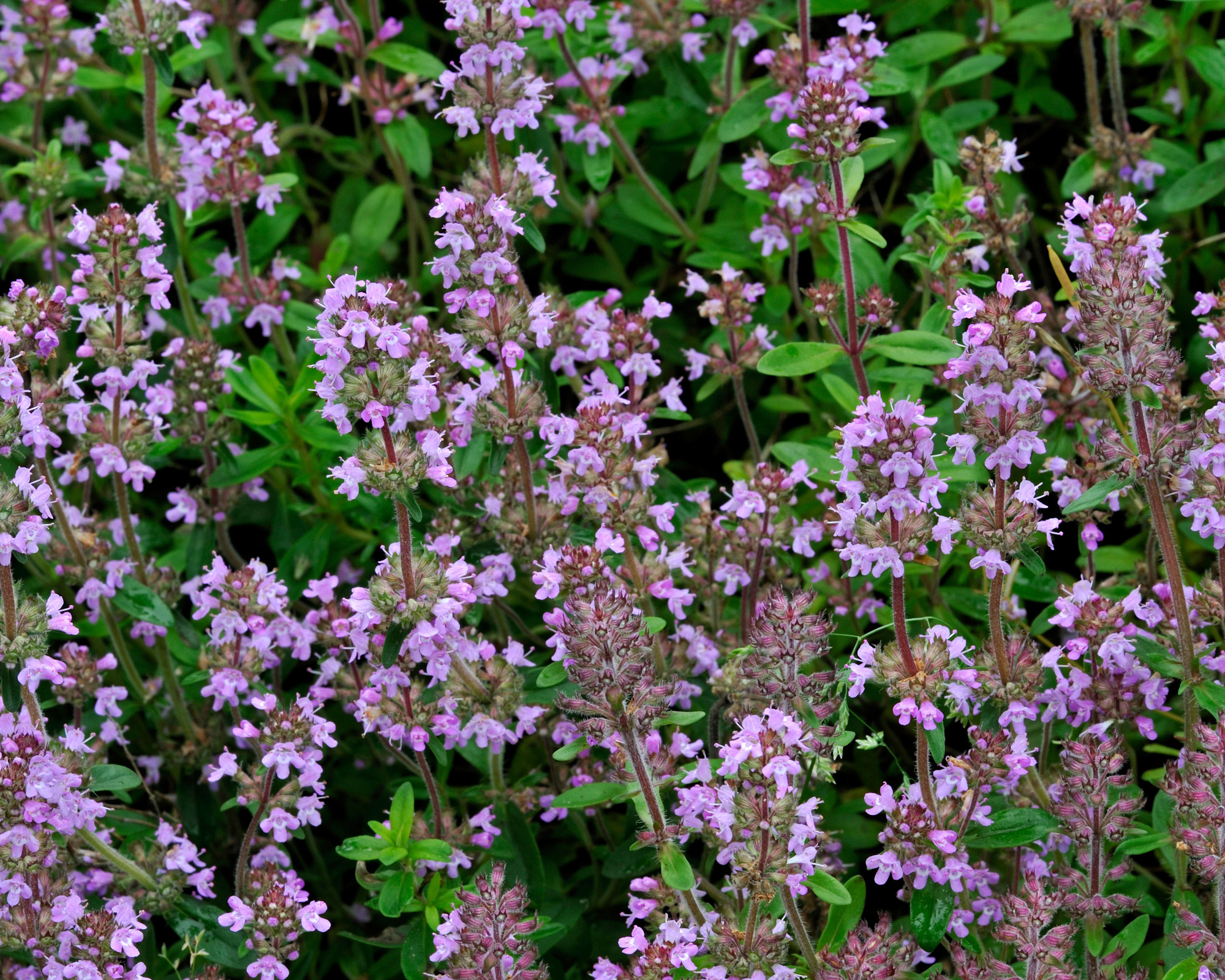
Thymus serpyllum
- Hardiness: USDA 4-9
- Height/spread: 3in x 12in (8cm x 30cm)
- Best for: Sunny spots
Thymus serpyllum (also known as creeping thyme or elfin thyme) is one of the daintiest-looking alpines. It forms a tight creeping mat of tiny, glossy evergreen leaves. This will provide all-year ground cover, with purple flower clusters appearing through the summer.
For those interested in hard-working south-facing garden ideas that also look good, this alpine variety is sublime. It appreciates sunny spots, copes well with exposed sites and is a good drought-tolerant option, so it’s ideal for filling gaps in paving or for creating a thyme lawn.
12. Alchemilla alpina

Alchemilla alpina
- Hardiness: USDA 3-7
- Height/spread: 8in x 12in (20cm x 30cm)
- Best for: Partial shade
The alpine lady’s mantle (Alchemilla alpina) is native to Europe and Southern Greenland. It makes a great low maintenance ground cover plant, being quite obliging, easy and reliable to grow. It suits sunny or partially shady areas and the early summer flowers will add a froth of zingy lime to the garden.
For anyone who has an interest in lupins, these alpine plants present an interesting point of comparison. Unlike Alchemilla mollis (the garden lady’s mantle), the leaves of this alpine are divided into a palmate fan. Another alternative has leaves edged with a silver variegation.
13. Armeria juniperifolia ‘Bevan's Variety’ AGM
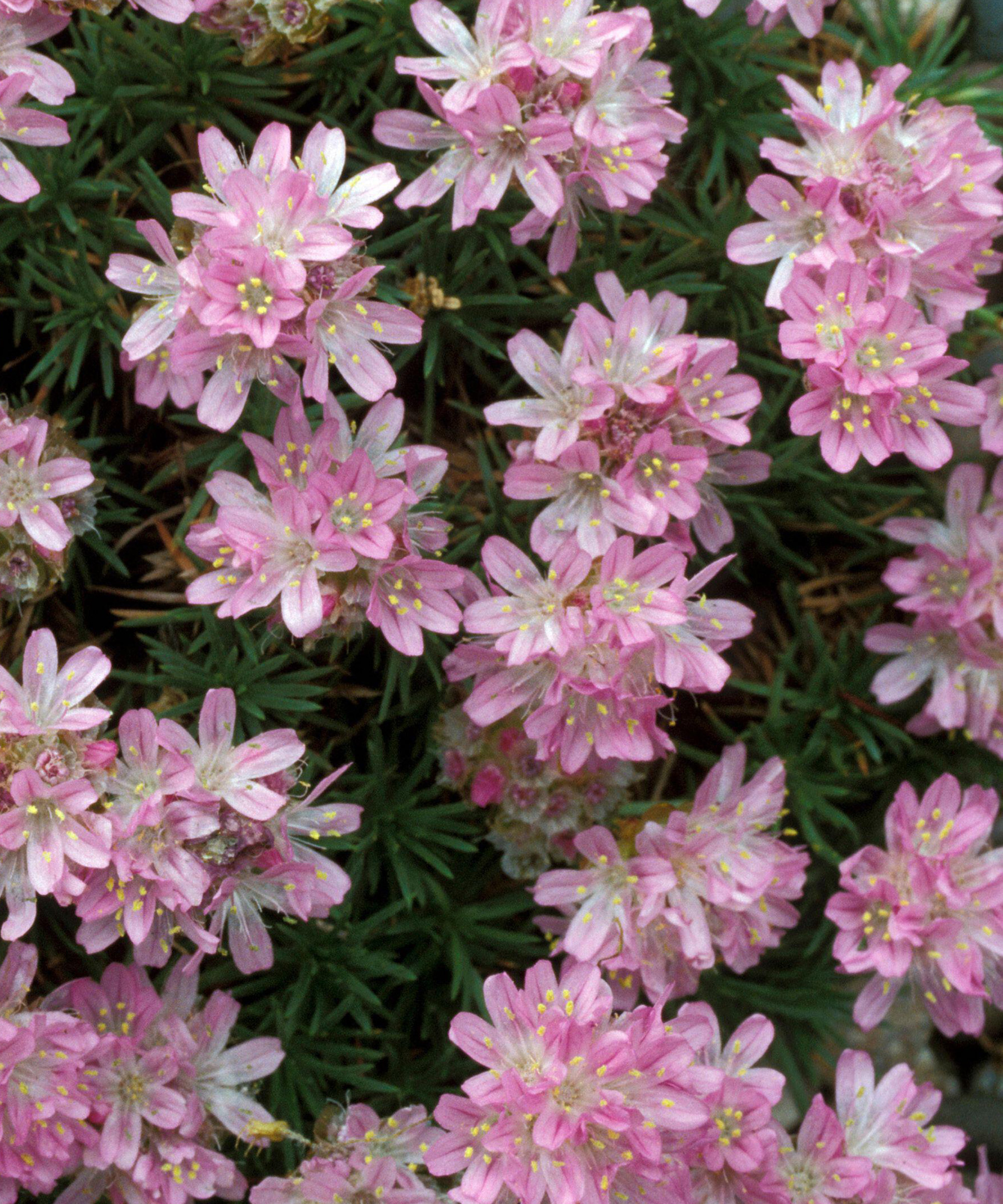
Armeria juniperifolia 'Bevan's Variety'
- Hardiness: USDA 5-7
- Height/spread: 4in x 10in (10cm x 24cm)
- Best for: Terracotta pots
Another AGM winner, Armeria juniperifolia ‘Bevan's Variety’ is one of the more compact alpine plants. It is neater and more delicate than its maritime cousin, with flowers appearing quite tight against the mounds of fine, juniper-like foliage.
Originating from Spain and sometimes called ‘Spanish thrift’, this alpine is one of the best container plants in this selection. It looks lovely planted singly in a small terracotta pot as a tabletop plant, or with a mix of other alpines in a trough or placed at the front of a border.
14. Erigeron karvinskianus AGM
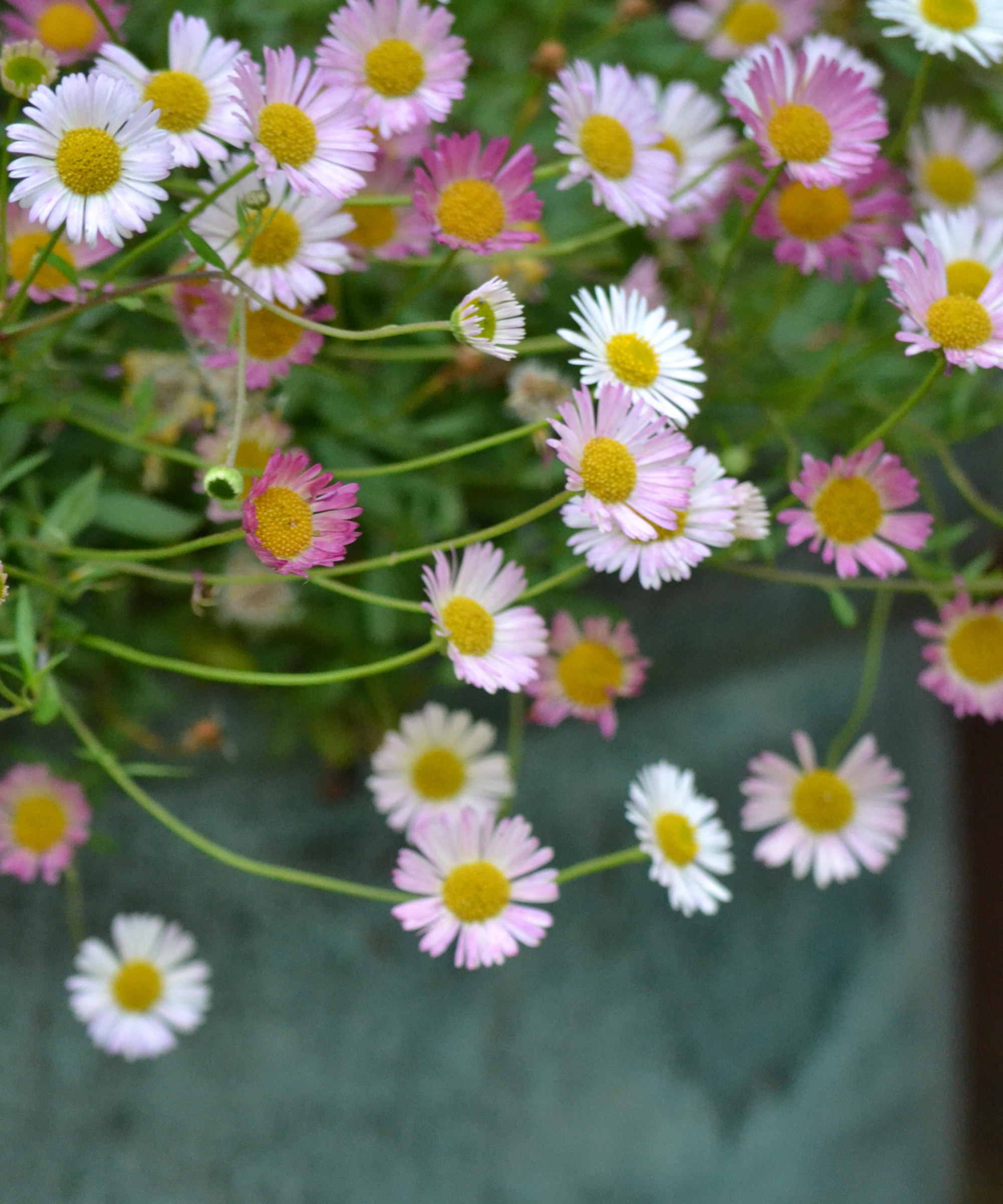
Erigeron karvinskianus
- Hardiness: USDA 6-9
- Height/spread: 12in x 5ft (30cm x 150cm)
- Best for: Window boxes
One of the daintiest-looking plants in our selection, Erigeron karvinskianus (aka Mexican or Australian fleabane) is a garden essential. Its tough habit and preference for dry, rocky terrains make it ideal for nooks and crannies in paths and walls, and for filling in gaps.
However, this AGM alpine variety is an equally great companion plant for creative window box ideas and for small containers. Its ability to spill over and soften edges and its extreme flower power give you an almost never-ending display of pretty daisy blooms.
15. Erodium x variabile ‘Album’
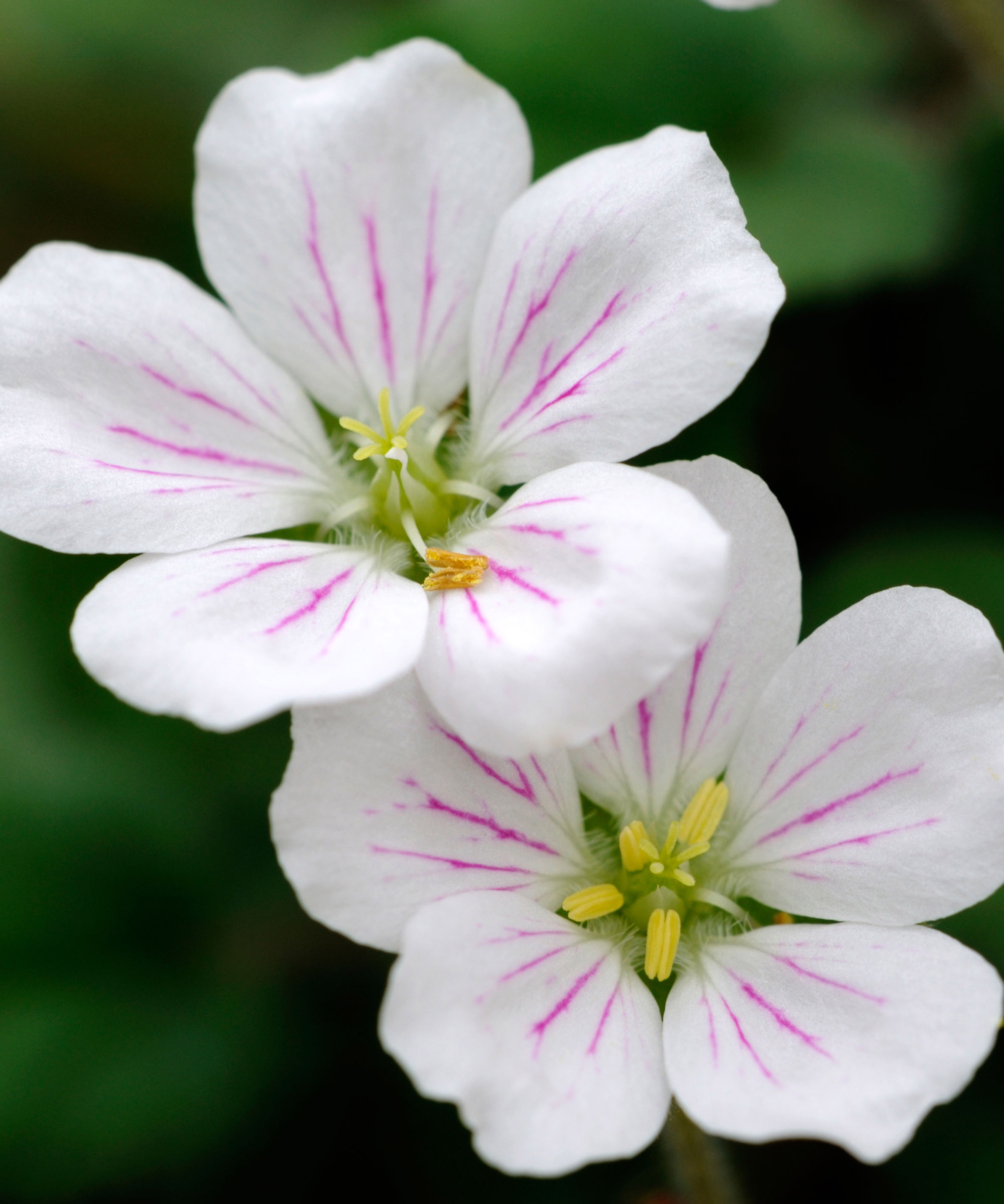
Erodium x variabile ‘Album’
- Hardiness: USDA 4-9
- Height/spread: 4in x 12in (10cm x 30cm)
- Best for: Gritty, chalky soils
The flowers of the Erodium x variabile ‘Album’ (storksbill) are reminiscent of tiny geraniums and point to the genus Geraniaceae. Anyone who likes to grow hardy geraniums will admire the charms of these pretty alpines, which are native to the Pyrenees.
Erodiums can be annuals, perennials and sub-shrubs, but always favor gritty, chalky soils in full sun. This hybrid is a pretty perennial with a lovely mat of soft, grey-green leaves and pure white flowers from late spring to early fall. It’s great for filling gaps at the front of a border but equally happy in a container.
16. Lewisia Sunset
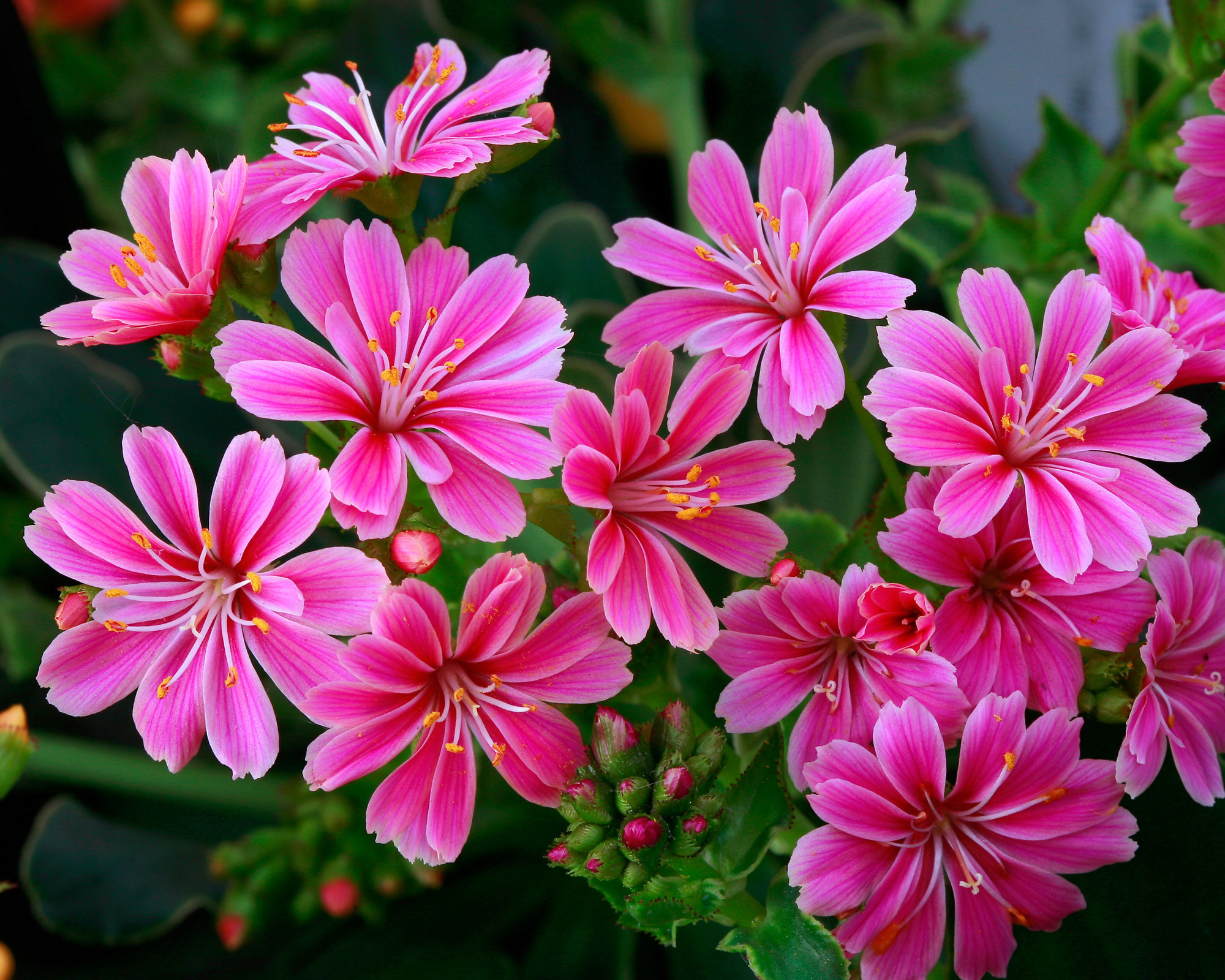
Lewisia ‘Sunset hybrids’
- Hardiness: USDA 3-8
- Height/spread: 20in (50cm)
- Best for: Garden borders
Lewisia Sunset hybrids are amongst the easier-to-grow varieties of lewisia. These evergreen perennials form rosettes of dark green fleshy leaves, the perfect backdrop for spring and early summer flowers. Long-lasting blooms appear in a range of colours from bright pinks to yellows, oranges and whites.
They tolerate cold but not winter damp, which causes them to rot at the base of the stem, so they need sharply drained compost. They are easy to propagate by removing the small offsets in summer and potting them up to grow on.
These alpines make lovely low maintenance flower bed ideas, in drier areas to the front of borders and rock gardens, and also make great container plants.
What conditions are best for alpine plants?
The key consideration with growing these plants successfully is to get the soil and drainage right. Choose a mix of good compost, sharp sand and grit. Many fare better in slightly alkaline conditions, reflecting the stony landscapes they evolved in.
So if your soil is heavy and damp, grow singly in pots or as a collection in a large, low container or an old sink. Once established, they are very easy to maintain.
Which are the best alpine plants for shade?
Many alpine plants can thrive in very harsh conditions, exposed to baking sun and drying winds. Some species do originate from alpine meadows and woodland edges, such as rare species of cyclamen and aquilegias and these will need part shade. However, they are hard to grow in the garden.
Still, whilst the majority of alpines need an aspect of full sun, there are some shade loving plants that benefit from shelter in the hottest part of the day. If you can find a spot in your garden that is partially shady, try pulsatilla, saxifrages and Veronica prostrata. Most highly ornamental Primula auricula alpines will also benefit from a spot of shade.
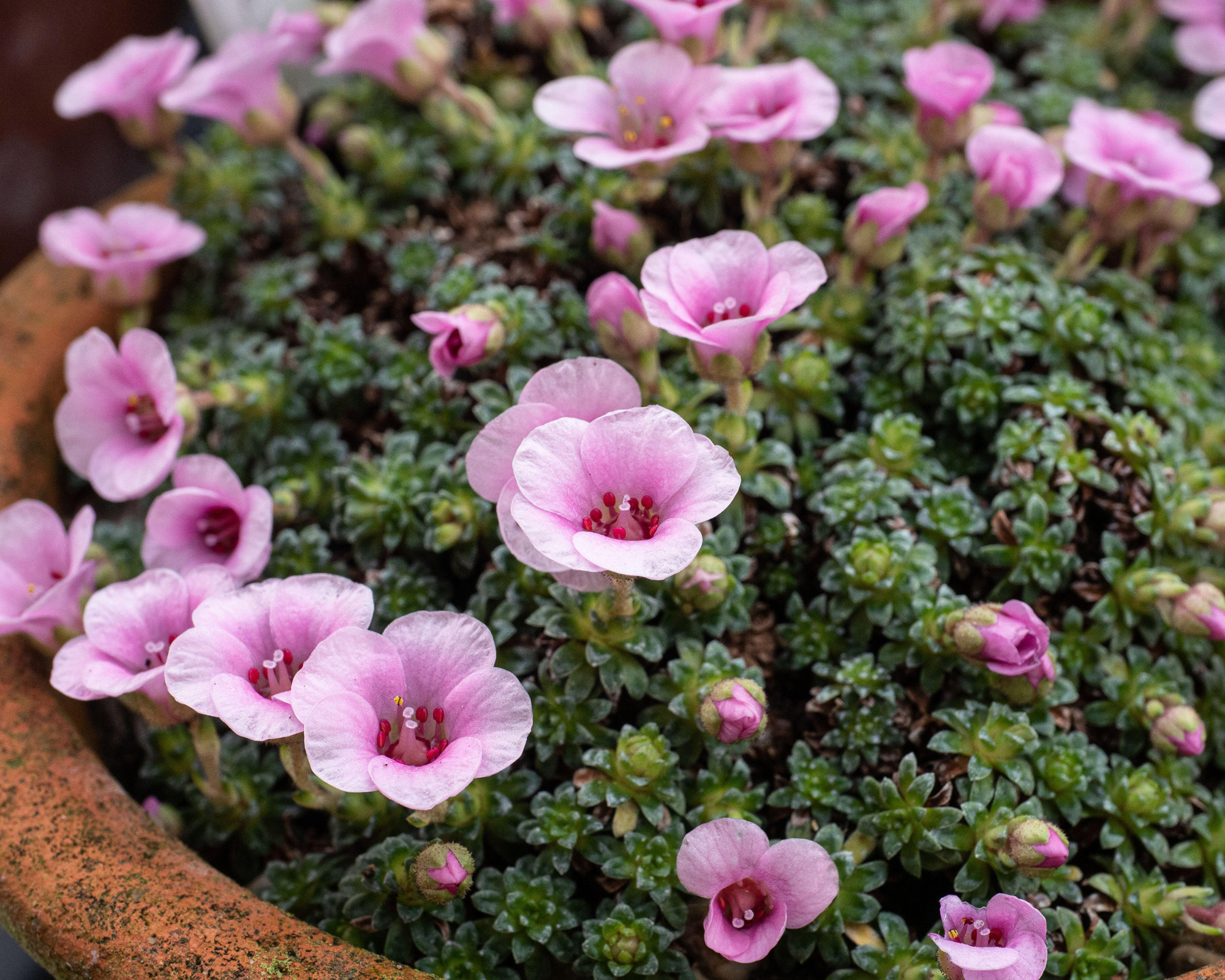
Saxifraga ‘Cranbourne’ benefits from a position shaded from hot sun
Which alpine plants are the most hardy?
Most alpine plants are frost hardy. Due to their origins in often high and remote areas, they have evolved to survive extreme weather conditions. Many alpine varieties have glossy or slightly hairy foliage. In their natural habitat, many will survive below freezing temperatures, only coming into flower once the last snows and ice have melted. So if you are worried about the right ways to protect plants from frost, the good news is it’s less of an issue here.
What is most important when growing them is getting the drainage right. Wet winter weather will do far more harm than the thermometer falling below zero. Adding plenty of coarse grit to the soil can help improve drainage. One last thing to bear in mind is that in cooler, damper gardens, some of the more fleshy sempervivums might need to be brought indoors over winter.

In her years of gardening, Camilla has designed planting schemes for gardens large and small in and around London, written about plants and how to grow them, and worked on BBC gardening TV shows. She's passionate about sharing tips, advice and the joy of plants in this great community of gardeners that we’re all part of, and she now also works as a therapeutic horticulturist, teaching growing for wellbeing and mental health. Her unfulfilled ambition is to crack the ultimate dog-friendly garden - she thinks getting it right depends more on the dog than the plants...
